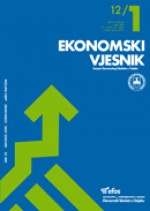Modeli mjerenja realnih učinaka fondova Europske unije na gospodarski razvoj
Measurement Models for Real Effects of the European Union Funds on Economic Development
Author(s): Anton Devčić, Marko ŠostarSubject(s): National Economy, Business Economy / Management
Published by: Sveučilište Josipa Jurja Strossmayera u Osijeku, Ekonomski fakultet u Osijeku
Keywords: EU; economy; development; measurement models;
Summary/Abstract: All the projects prepared by applicants following various calls for project proposals by the European Commission have their priorities and objectives. On the other hand, the European Commission has its own objectives, which are conducted through its policies and programmes. Both sides have complementary objectives, the achievement of which can generate direct or indirect implications for socio-economic conditions in the area where projects are being implemented, such as cities, municipalities, regions or even whole countries. Most stakeholders strive for an ideal situation, i.e. to receive and utilize all the available funds within the EU funds at their disposal. Consequently, the performance of any territorial unit is most frequently and most simply measured by the number of projects and the allocated funding. This, however, is the nominal dimension of implemented projects, whereas real effects of these projects are much harder to assess. Nevertheless, this is the only way to obtain real indicators of a project’s impact or implications for socio-economic conditions in a designated area. There are different methods used by researchers in the EU to obtain answers to these questions, some of which will be presented in this paper. The focus will be on those which, although currently not applied in the Republic of Croatia, could easily be used here.
- Issue Year: 25/2012
- Issue No: 1
- Page Range: 133-144
- Page Count: 13
- Language: Croatian

